Your cart is currently empty!
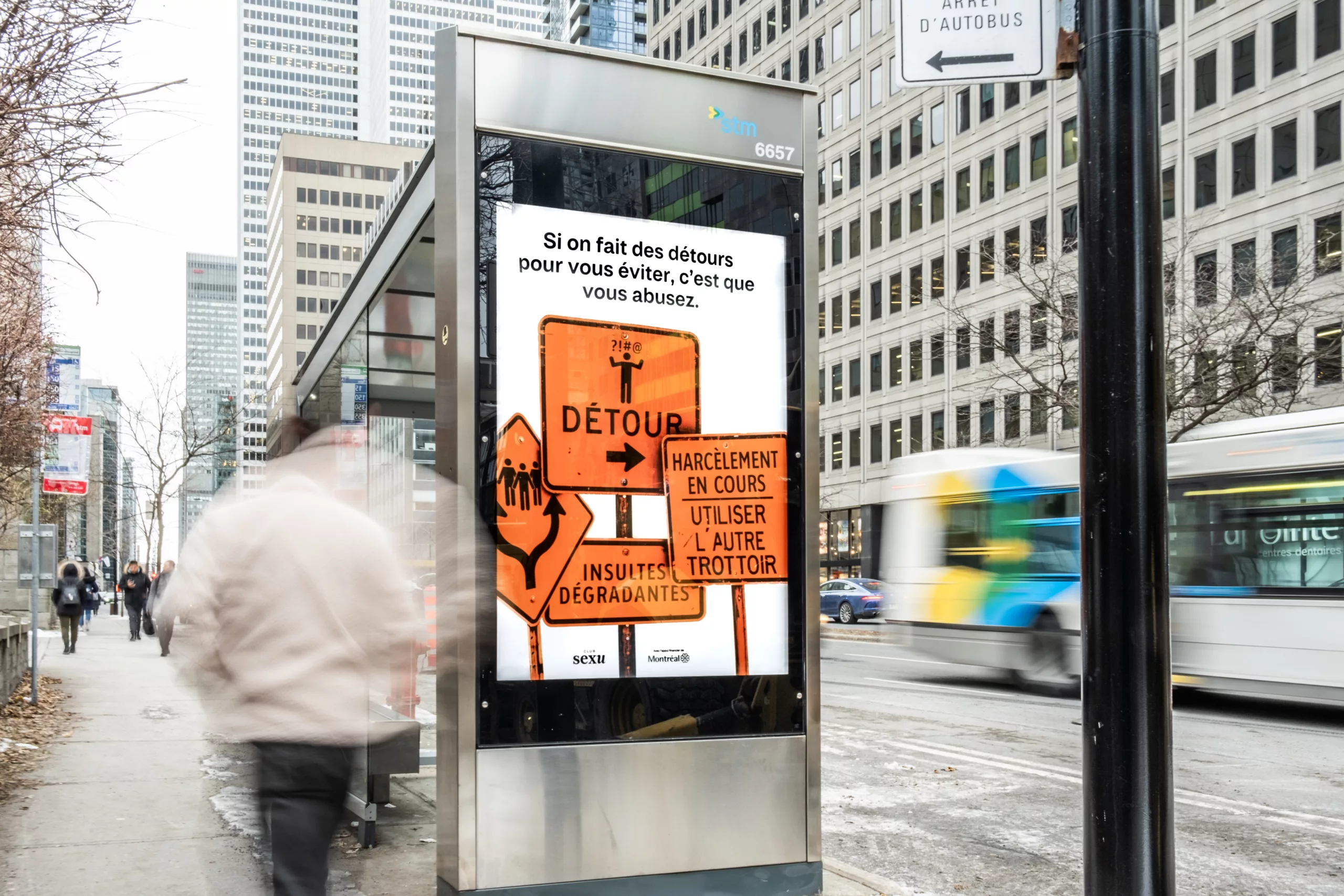
Street harassment
Background
Street harassment: a concerning safety issue that has (finally) been documented
In 2022, researchers from UQAM collaborated with the Centre d’éducation et d’action des femmes [Education and Action Centre for Women] to publish the first study assessing the extent of street harassment in Montreal (Courcy et al., 2022). Many of its findings are concerning: 65.3% of the 3,300 participants reported having experienced street harassment, and certain groups reported even higher rates, including youth (82%), sexually diverse people (75%), gender diverse people (84%), and women (69%).
This study quantified young people’s experiences, particularly those that occurred during the waves of denunciations during the #MeToo movement. Higher rates of victimization among youths can be explained by the fact that they are more likely to travel on foot, bicycle, or public transit than other age groups. According to Courcy and their colleagues (2022), at all times of the day, the places where street harassment is most prevalent are streets, parks, buses, the metro, and parking lots.
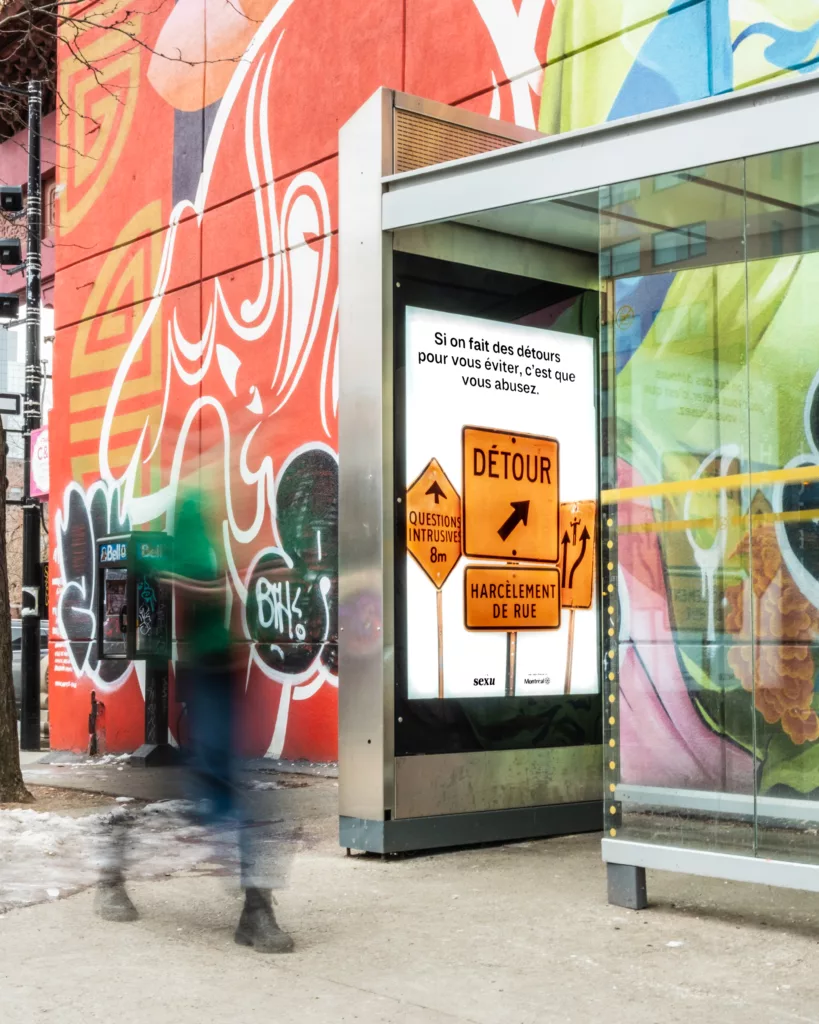
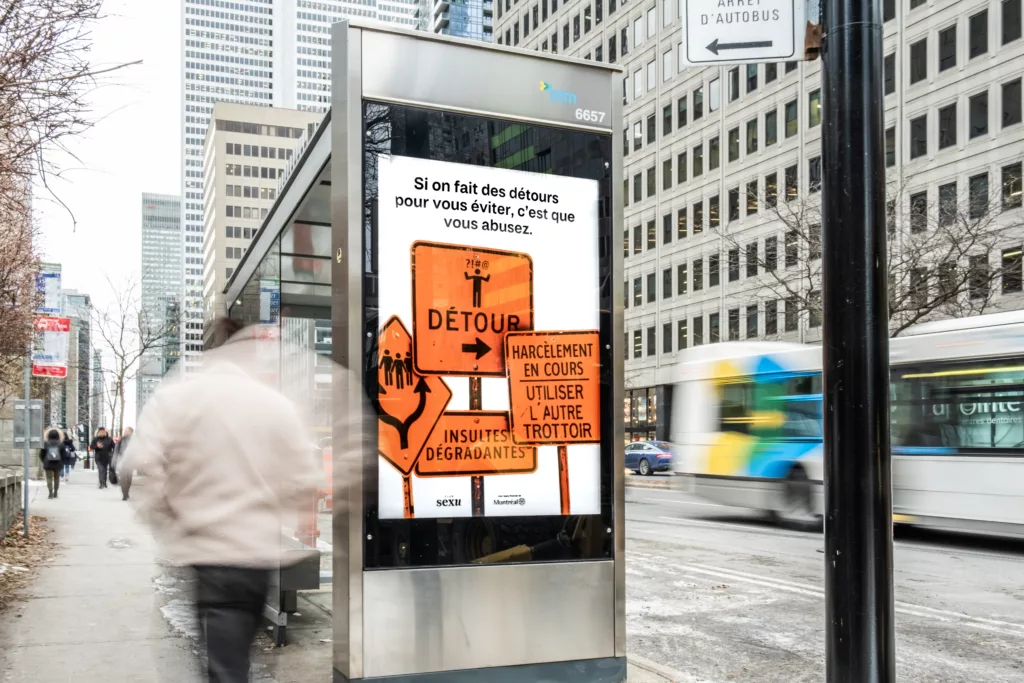
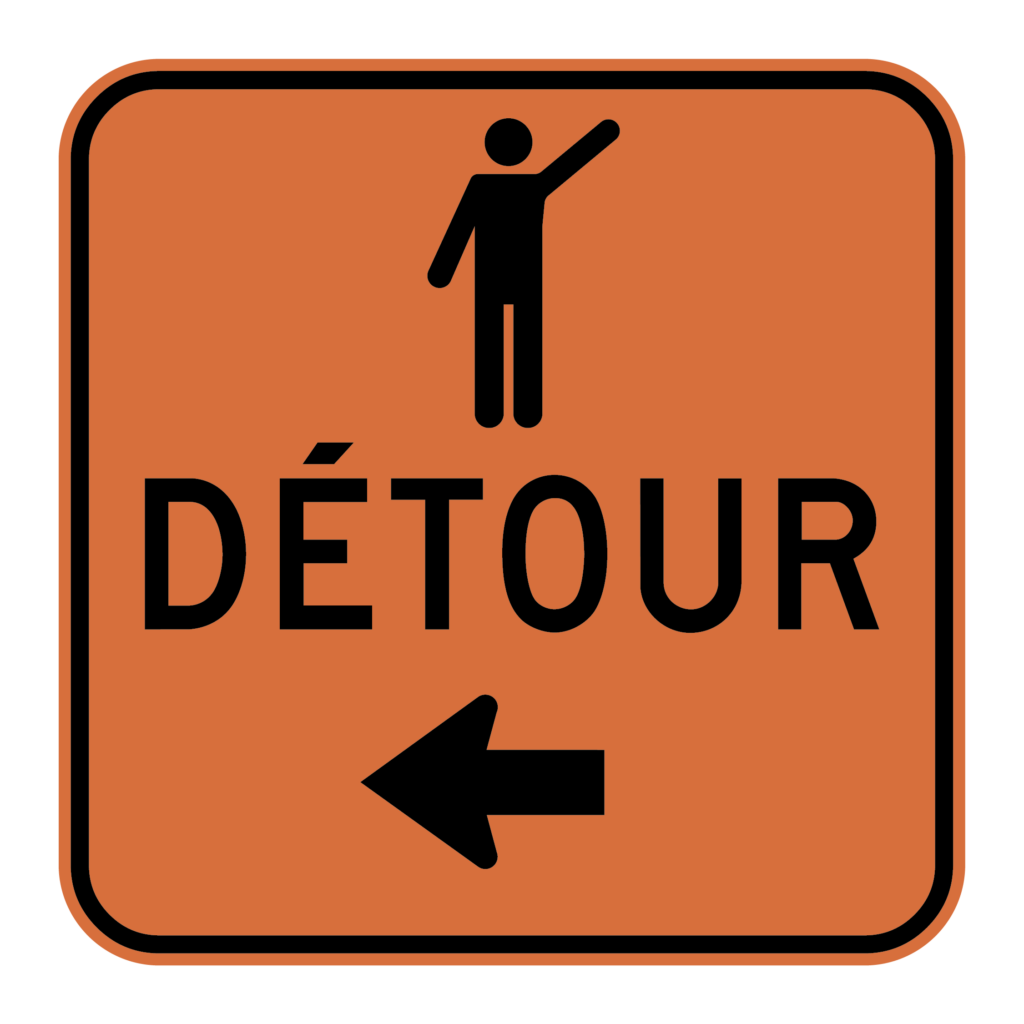
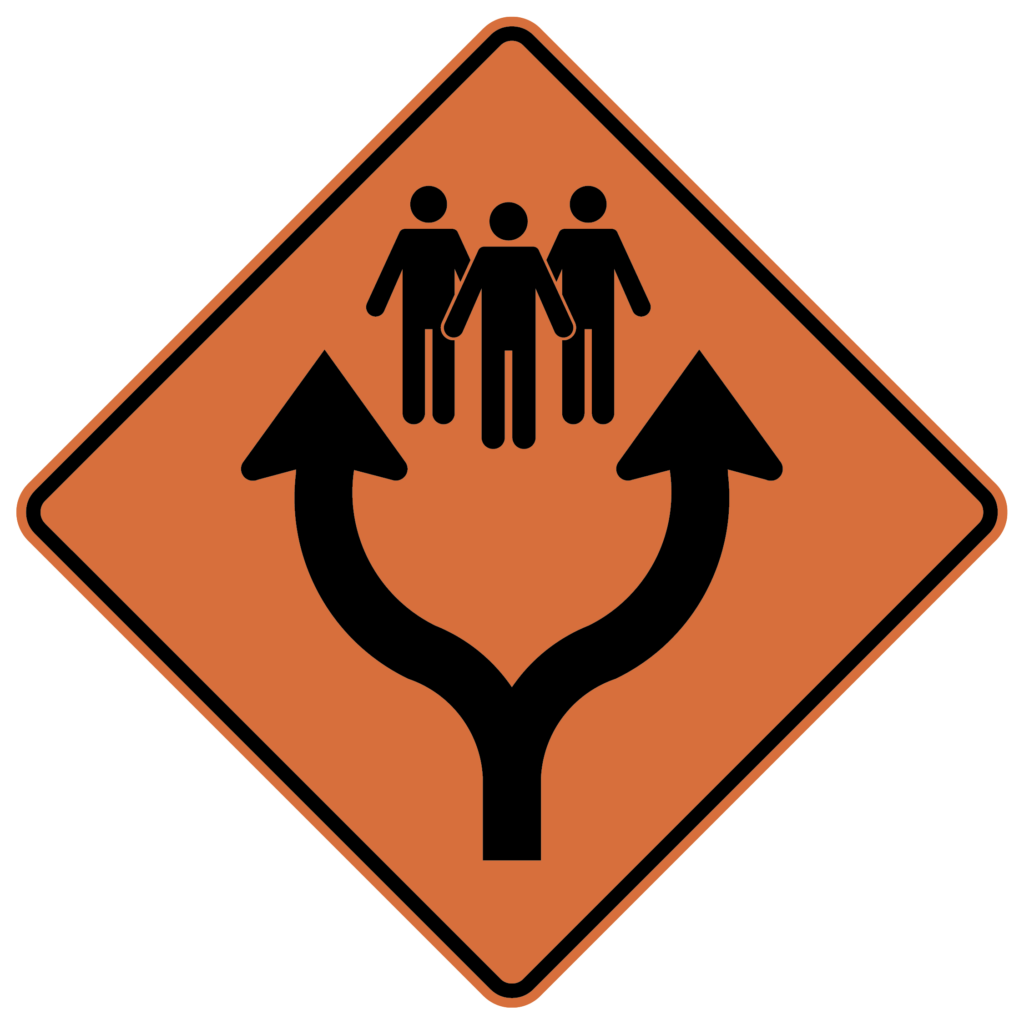

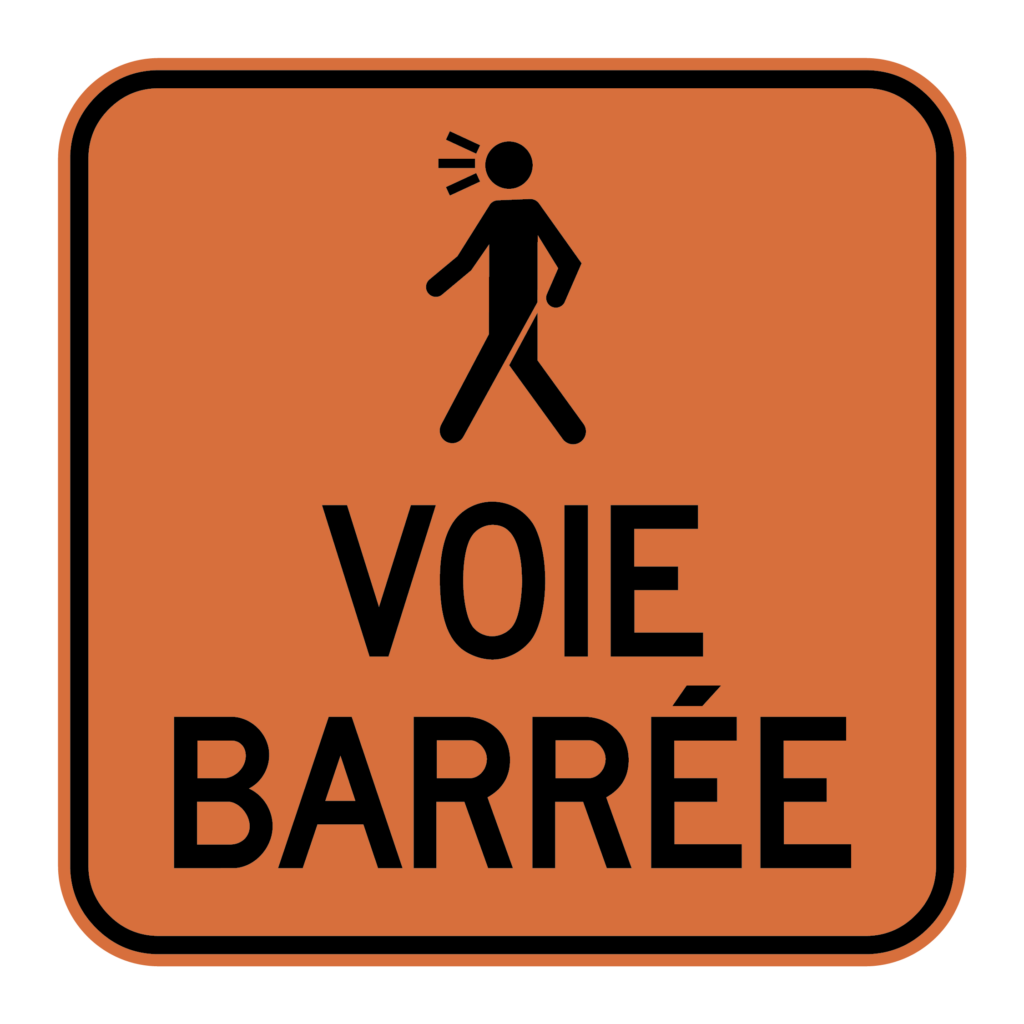
Strategy
Taking back the streets
Most street harassment campaigns—each as important as the last—have generally placed witnesses and/or victims at the centre of their messages. Our team chose a fresh perspective and aimed the message toward the harassers by identifying specific behaviours that constitute street harassment: leers, whistles, degrading insults, and intrusive questions.
The primary goal of this initiative is to raise collective awareness of the issue of street harassment in Montreal, and thus to contribute to reducing violent behaviour.
Given that the campaign calls out actions that take place on the street, public posters seemed like a natural means of raising awareness. Selecting various locations that tend to be busy in December allow us to reach the target audience, especially near the Bell Centre, where approximately 10,000 to 15,000 people per event gather in downtown’s main arteries.
Radio and social media were added as complementary channels to reach our target audience during their commute.
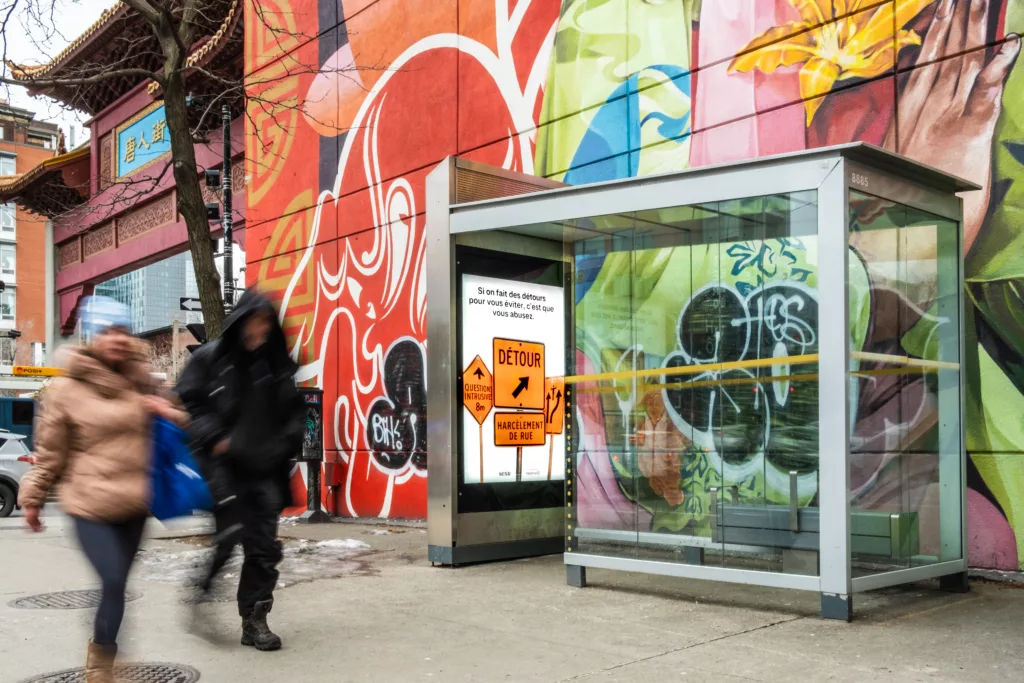
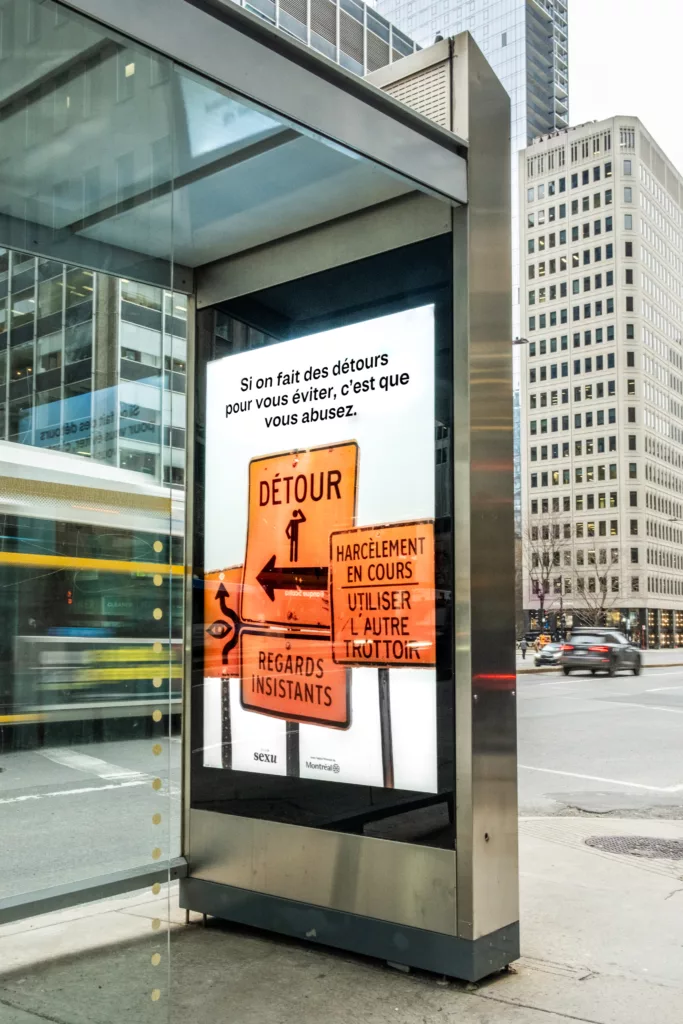
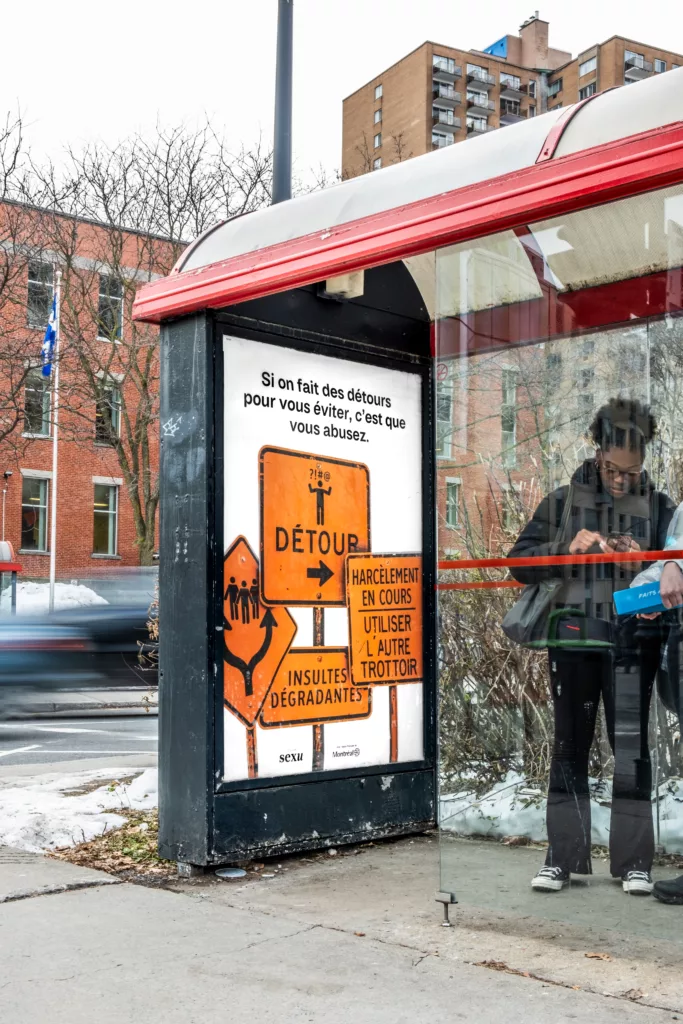
Production
Street harassment versus orange traffic cones
Unlike road signs, which ensure street users’ safety, street harassment greatly undermines people’s feelings of safety while roaming the city.
The campaign’s concept therefore revolves around the textual and graphic codes used in the world of construction and road signs. Trompe-l’oeil posters and a radio advertisement imitating the tone typically used in traffic reports will not go unnoticed!
The campaign’s “detour” image is particularly promising: vulnerable people are used to changing their route to avoid potential threats when they fear for their safety.
The line “If we take detours to avoid you, it’s because you’re crossing the line” is at the forefront of the campaign and clearly places the harassers at the heart of both the message and the solution.
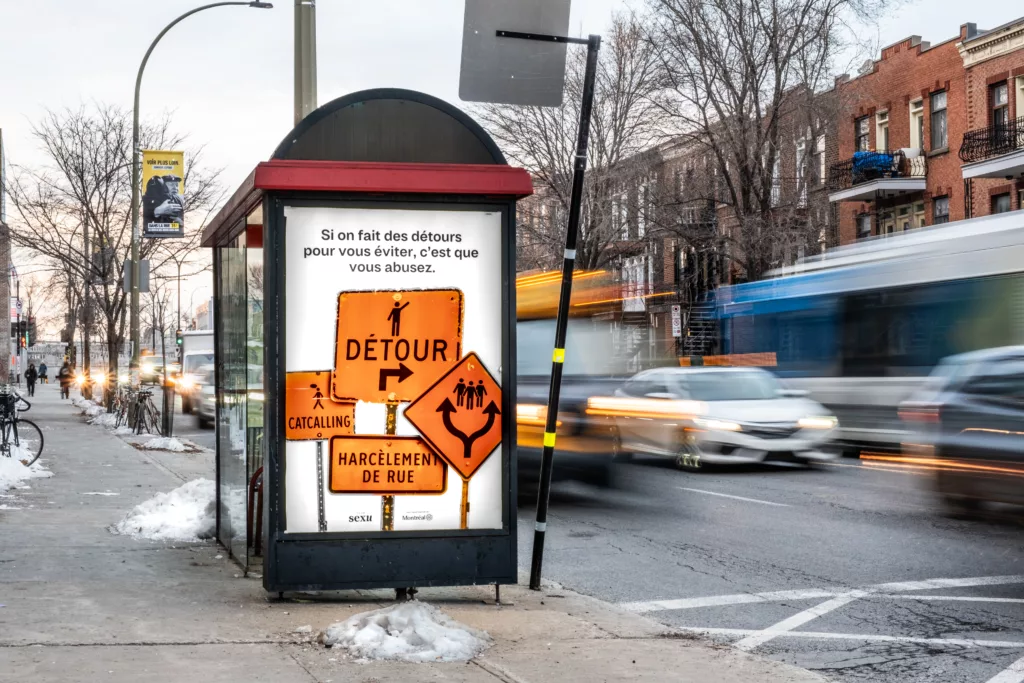
Ressources
-
In the event of an emergency, it is possible to use the assistance stations located in the Société de transport de Montréal’s (STM) metro stations or to use the intercom system inside the cars.
The City of Montreal’s “Witnesses, take action” campaign, initiated in collaboration with the Société de transport de Montréal (STM) and the Service de police de la Ville de Montréal (SPVM), contains other useful information and resources on this subject.
-
This organization offers several interesting tools and content, including an interactive “choose your own adventure” game (available in French only) on street harassment to raise awareness about the impact of active witnesses.
-
CAVACs are non-profit organizations that provide front-line services to all victims of crime and their friends and family, regardless of the offence. They are located throughout Quebec as well as in several courthouses.
CAVACs offer different services, such as:
- Information and support throughout legal proceedings
- Post-traumatic and psychosocial counselling
You can call 1-866-LE-CAVAC (532-2822) to find a CAVAC in your area and make an appointment.
-
CALACSs are non-profit organizations that offer help and support services to women and adolescent victims of sexual violence. They are located in several Quebec regions.
Services are available in person and over the phone. Consult the list of CALACS to find one in your area.
-
This phone line aims to help victims of sexual violence and their friends and family, as well as individuals who work with them. Trained responders receive the calls, provide information, and redirect callers to relevant support and protection resources near them.
You can call at any time at 1-888-933-9007. For more information, visit their website.
-
Rebâtir is a free and confidential legal aid service offered by lawyers. You can get 4 hours of legal advice if you are experiencing sexual or domestic violence. You can call 1-833-REB TIR (732-2847) any day of the week from 8:30 a.m. to 4:30 p.m. or visit their website.
-
L’Aparté offers front-line services to people who have experienced or witnessed harassment or sexual violence in the cultural sector.
You can reach them at 1-833-LAPARTE (527-2783) or via their website.
-
The HICWH is a non-profit organization that offers psychological support and information to victims of psychological and sexual harassment in the workplace.
Services are offered in person in Montreal or by phone at 514-526-0789.
For more information, visite their website.
-
Ça suffit aims to help individuals experiencing emotional distress related to sexual fantasies involving minors and prevent sexual offenses by offering support services.
- Helpline available Monday to Thursday from 9 a.m. to 6 p.m.: 1-844-654-3111
- Self-Help
- Online Chat Mondays and Wednesdays from 9 a.m. to 6 p.m.
-
Workplace-friendly content aimed at integrating anti-racism and anti-harassment information into production-related safety manuals and discussions.












